By the NCFishes.com Team
The New River basin, in the extreme northwest corner of North Carolina, is one of the smallest river basins in the state with a drainage area of 754 mi2 (Figure 1). This basin borders Virginia and Tennessee and the Yadkin, Catawba, and Watauga basins in the state and tributaries of the South Fork Holston River basin in Tennessee. The New River and its tributaries in North Carolina are the headwaters of the Kanawha River, a tributary of the Ohio River.
Figure 1. North Carolina’s 21 river basins with the New River basin noted by a red arrow.
The other headwater basins in North Carolina are the Savannah and Watauga. Historically (pre-European settlement) in these three small headwater basins, 28 fish species were indigenous (native) in each of the New and Savannah basins and 19 species were indigenous in the Watauga (Tracy et al. 2020). The species-poor New basin supported 0.04 indigenous species/mi2, whereas the Watauga and Savannah supported 2-4 times more indigenous species/ mi2, 0.09 and 0.16, respectively.
The New basin fauna, unlike some of the other much larger mountain basins, was lacking any species of lampreys and centrarchids (sunfishes and black basses). [Note: There are some recent and preliminary discussions that Smallmouth Bass might have been indigenous in the New River basin, although there are many others, e.g., Brewer and Orth (2018); Buckwalter et al. (2018), Jenkins and Burkhead (1994), Taylor et al. (2019), and Tracy et al. (2020), who consider it to be introduced into this basin. The earliest museum vouchered specimens of Smallmouth Bass from North Carolina’s portion of the basin were not until 1941 (Tracy et al. 2020). Future detailed genetic studies might shed new light on its original distribution in North Carolina.]
Historically, minnows were represented by 16 species and there was a high diversity of darters given the basin’s drainage size – 3 species each of Etheostoma and Percina (Table 1). The top piscivorous predators would have been Brook Trout, Salvelinus fontinalis, in most streams and Flathead Catfish, Pylodictis olivaris, in the larger, slower moving reaches of the mainstem. Endemic species (i.e., species found nowhere else in North Carolina) included Bigmouth Chub, Nocomis platyrhynchus, New River Shiner, Notropis scabriceps, Kanawha Minnow, Phenacobius teretulus, “Kanawha” Rosyface Shiner, Notropis sp., Tonguetied Minnow, Exoglossum laurae, Kanawha Darter, Etheostoma kanawhae, Appalachia Darter, Percina gymnocephala, and Sharpnose Darter, P. oxyrhynchus (Figure 2).
Table 1. Indigenous and nonindigenous fish species found in the New River basin in North Carolina.
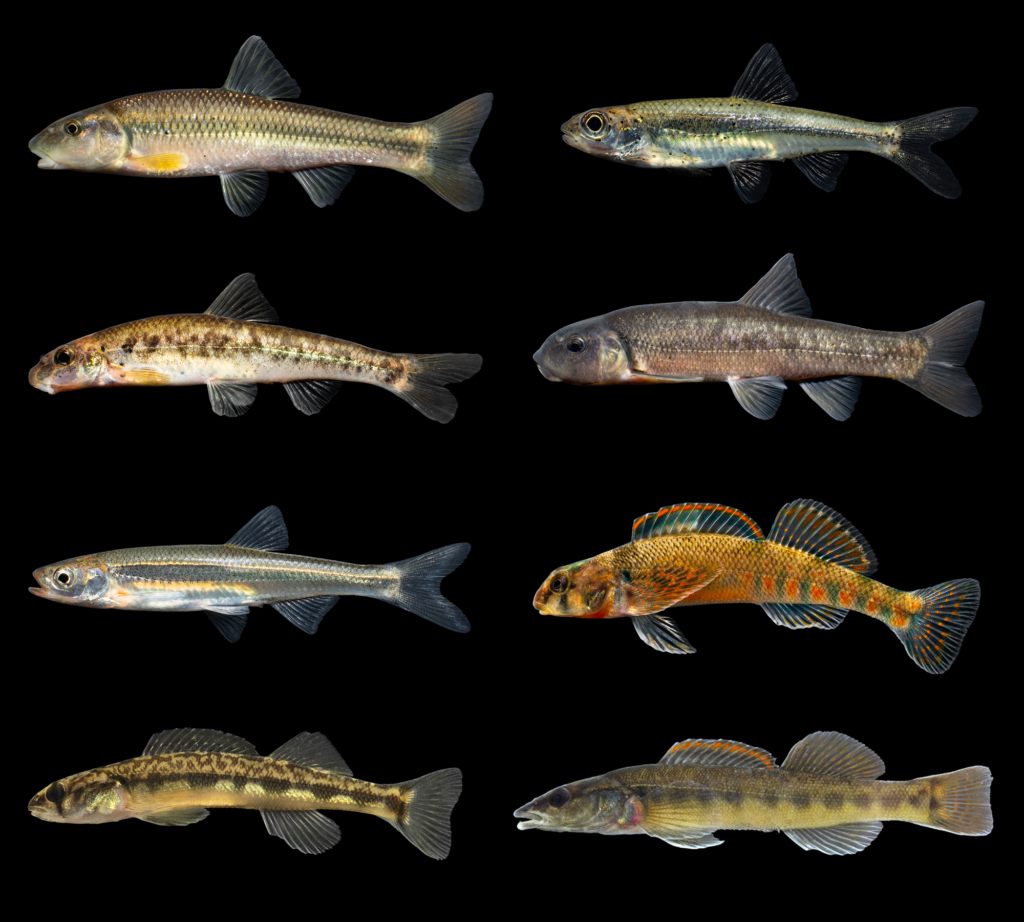
Figure 2. New River basin endemic fish species. From left to right, top to bottom: Bigmouth Chub, Nocomis platyrhynchus, New River Shiner, Notropis scabriceps, Kanawha Minnow, Phenacobius teretulus, Tonguetied Minnow, Exoglossum laurae, “Kanawha” Rosyface Shiner, Notropis sp., Kanawha Darter, Etheostoma kanawhae, Appalachia Darter, Percina gymnocephala, and Sharpnose Darter, P. oxyrhynchus. Photograph of Sharpnose Darter courtesy of David Neely.
Because of altered land- and aquatic-scapes across the New basin, today’s fish fauna does not resemble that of millennia-past. The original fauna (28 species) now shares the diverse aquatic habitats with 28 nonindigenous species including 9 additional species each of minnows and sunfishes, 2 additional of percids, and 14 game species (Table 1; Figures 3 and 4). Three of the 28 nonindigenous species originated outside of the United States: Common Carp, Cyprinus carpio, Grass Carp, Ctenopharyngodon idella, and Brown Trout, Salmo trutta; and two species that are indigenous elsewhere in the United States: Fathead Minnow, Pimephales promelas, and Rainbow Trout, Oncorhynchus mykiss. There is now a greater percentage of nonindigenous species, as a percentage of the total number of species present, occupying the New basin than any other basin in the state (Figure 5).
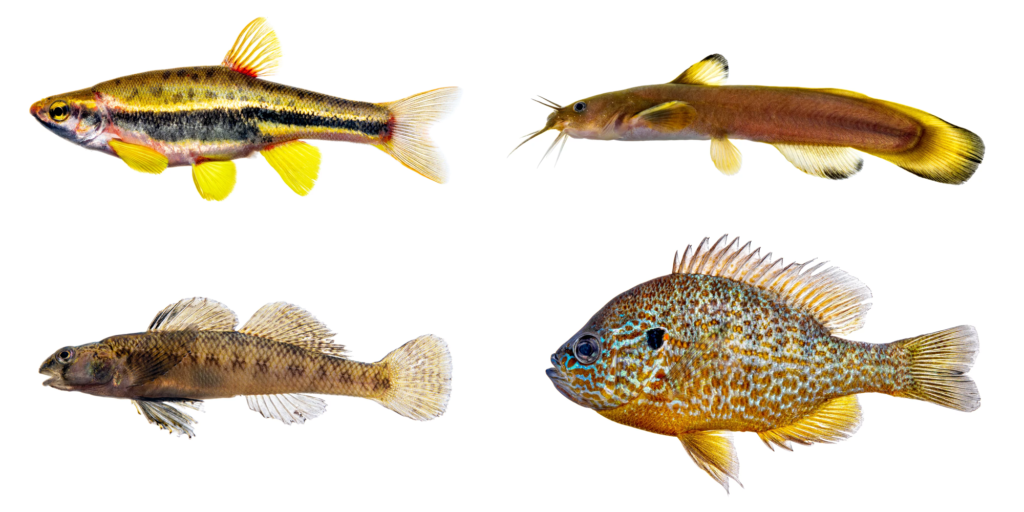
Figure 3. Examples of nonindigenous species now found in the New River basin in North Carolina. From left to right, top to bottom: Mountain Redbelly Dace, Chrosomus oreas, Margined Madtom, Noturus insignis, Southern Tessellated Darter, Etheostoma maculaticeps, and Pumpkinseed, Lepomis gibbosus.
Figure 4. Distribution of White Catfish, Ameiurus catus, with black arrow pointing to the location of the one of the most recent nonindigenous species introductions in the New River basin.
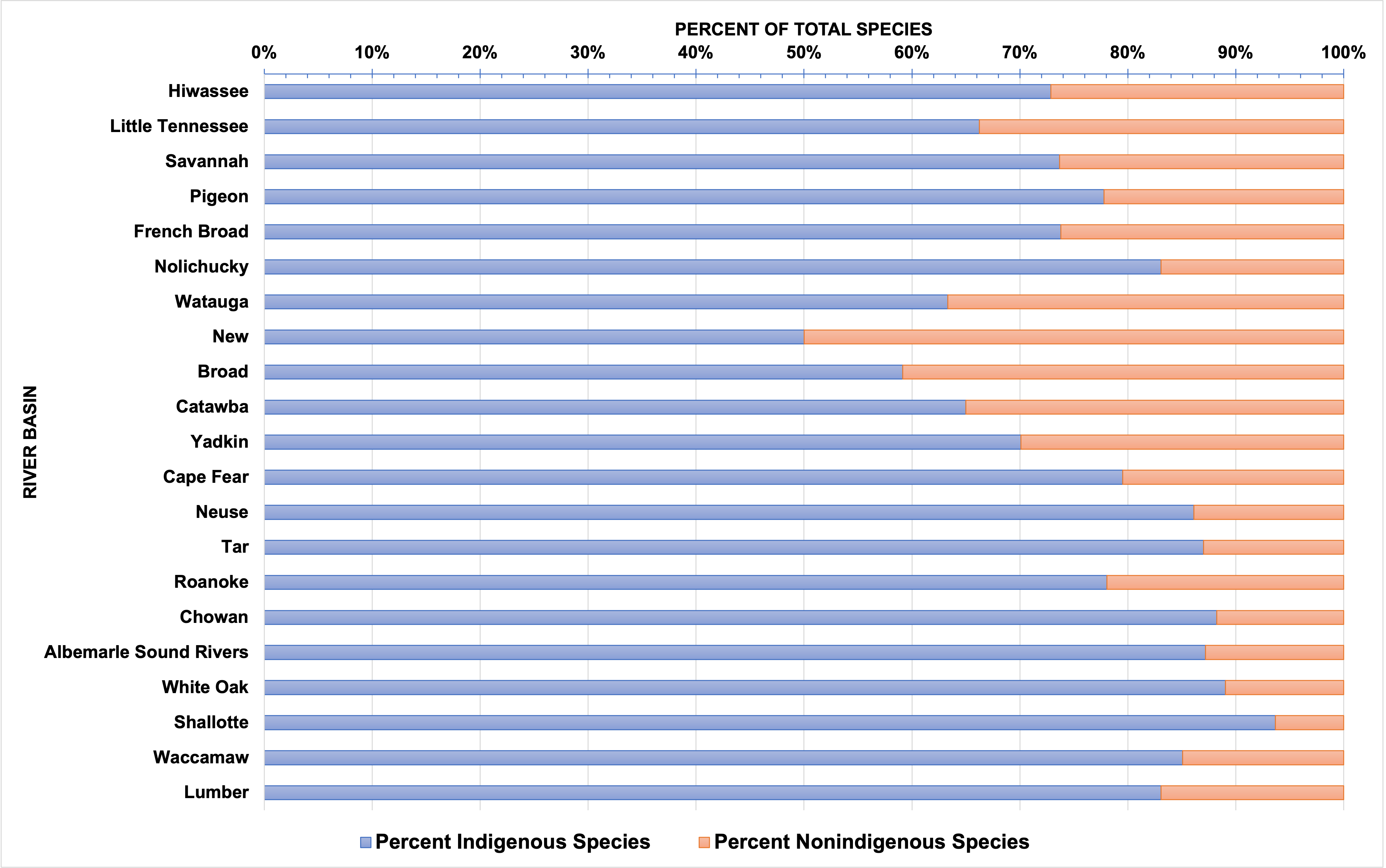
Figure 5. Indigenous and nonindigenous species as a percentage of the total number of species found within each of North Carolina’s river basins.
So how did the New basin end up as the foster basin for all these 28 extra species? The causes and answers are numerous – some are simple and obvious; others speculative:
- Generally, the high prevalence of nonindigenous species in the New basin may be related to several factors that promote introductions: the presence of large impoundments in adjacent river basins, the proximity to urban areas and the stream’s attractiveness to anglers, and the proximity to adjacent drainages.
- The decline of the Southern Appalachian strain of Brook Trout due to habitat and water quality degradation led to the widespread stockings by state and federal agencies and citizens of nonindigenous Rainbow Trout and Brown Trout.
- The fishermen’s quest for more game species as the number of wild Brook Trout declined, led to species of sunfish, Lepomis spp., Rock Bass, Ambloplites rupestris, Smallmouth Bass, Largemouth Bass, M. salmoides, and Muskellunge, Esox masquinongy, to be legally stocked by resource agencies or intentionally but illegally by fishermen. Some sunfish species, such as Green Sunfish, Lepomis cyanellus, and Redear Sunfish, L. microlophus, may have been inadvertently introduced when other sunfish species such as Bluegill, L. macrochirus, and Redbreast Sunfish, L. auritus, were being stocked.
- Brightly colored species such as Mountain Redbelly Dace, Chrosomus oreas, Redlip Shiner, Notropis chiliticus, and Tennessee Shiner, N. leuciodus, have increased chances of being seined from nearby basins and used for bait. Other species also found in adjacent basins such as Margined Madtom, Noturus insignis (used in fishing for Smallmouth Bass), and Redlip Shiner would also be used as bait. At the end of the day, those fish not used for bait could have been released into New River basin.
- Other bait bucket dumping of common, commercially available bait fish would account for the establishment of Golden Shiner, Notemigonus crysoleucas, and Fathead Minnow.
- Owners of private ponds requested their ponds be stocked with suitable species such as Bluegill, Pumpkinseed, L. gibbosus, Largemouth Bass, and Yellow Perch, Perca flavescens. Often these ponds over-flowed during flood events releasing their inhabitants to nearby waterways.
- At least one species, Grass Carp was introduced into private ponds to control nuisance aquatic plants and it also escaped during flood events.
Until detailed genetics studies are conducted, we can only speculate as to where some of the nonindigenous species, but indigenous in other nearby river basins, came from:
- Yadkin basin – Redlip Shiner, Highback Chub, Hybopsis hypsinotus, White Catfish, Ameiurus catus, Brown Bullhead, A. nebulosus, Margined Madtom, Southern Tessellated Darter, Etheostoma maculaticeps (but see MacGuigan et al. 2022), and several species of sunfish;
- Catawba basin – Margined Madtom and several species of sunfish;
- French Broad basin – Saffron Shiner, Notropis rubricroceus, Warpaint Shiner, Luxilus coccogenis, Tennessee Shiner and Rock Bass;
- Watauga basin – Whitetail Shiner, Cyprinella galactura, Warpaint Shiner, Tennessee Shiner, and Rock Bass; and
- Roanoke basin – Redlip Shiner and Mountain Redbelly Dace.
[Note: Dr. Michael Gangloff’s Aquatic Conservation Research Lab at Appalachian State University is investigating the phylogeography of Appalachian mountain stream fishes using molecular markers to better understand the native range of several montane stream fishes and identify which populations are native or invasive. One such species being studied is the Warpaint Shiner.]
So what’s the big fuss concerning having a more species-rich fish community in the New basin? Well, for starters:
- The New basin, like so many other river basins in North Carolina, is losing or has already lost its biological distinctiveness that separates it from other basins. In other words, our basins are becoming more homogeneous to one another and, as such, this represents another loss of natural biological heritage. Introduced species may also out-compete and ultimately displace the native species.
- The New basin is home to eight species found nowhere else in North Carolina and seven of them, except for Bigmouth Chub, are considered imperiled either state endangered (Sharpnose Darter), state threatened (Logperch, Percina caprodes), special concern (Kanawha Minnow), or significantly rare (Tonguetied Minnow, “Kanawha” Rosyface Shiner, Kanawha Darter, and Appalachia Darter) (NCNHP 2020; NCWRC 2021; Tracy et al. 2020). Introduced piscivores potentially could prey upon these endemic and imperiled species.
- It has been noted that where Margined Madtom has been introduced, their populations are very dense. This appears to lead to them edging out everything from crayfish to darters to hellbenders (Luke Etchison, North Carolina Wildlife Resources Commission, pers. comm.).
- Finally, most introduced species that have a negative impact on the native fish community are impossible to eradicate once they become established and efforts to do so are expensive and time-consuming.
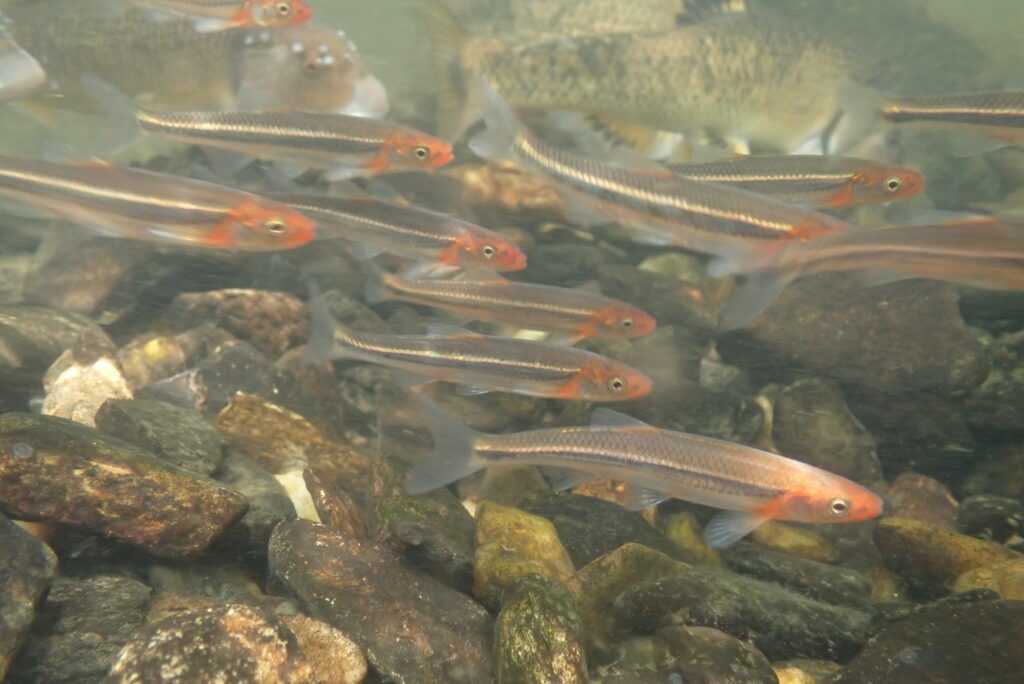
Having said all the above, what can be done in the future to prevent wanted or unwanted fish species from taking up permanent residency in the New basin or other basins in North Carolina? A few suggestions are offered:
- Let’s leave the day-to-day and long-term management of freshwater fisheries to fishery professionals within the North Carolina Wildlife Resources Commission.
- Let’s refrain from introducing species into the basin, even as a new game species. There are already enough cold-water, cool-water, and warm-water game species in the New basin to satisfy the recreational needs of all fishermen.
- If using fish as bait only use fish obtained from the basin in which one is fishing (Figure 1). If, at the end of the day there are any unused bait fish remaining, let’s humanely dispose of them, especially if they came from a different stream from the one that we are fishing in. This small task will help ensure the genetic integrity of that species within that stream.
By following these suggestions, the existing species richness of the New basin can be maintained well into the future without the addition of new and potentially nuisance species.
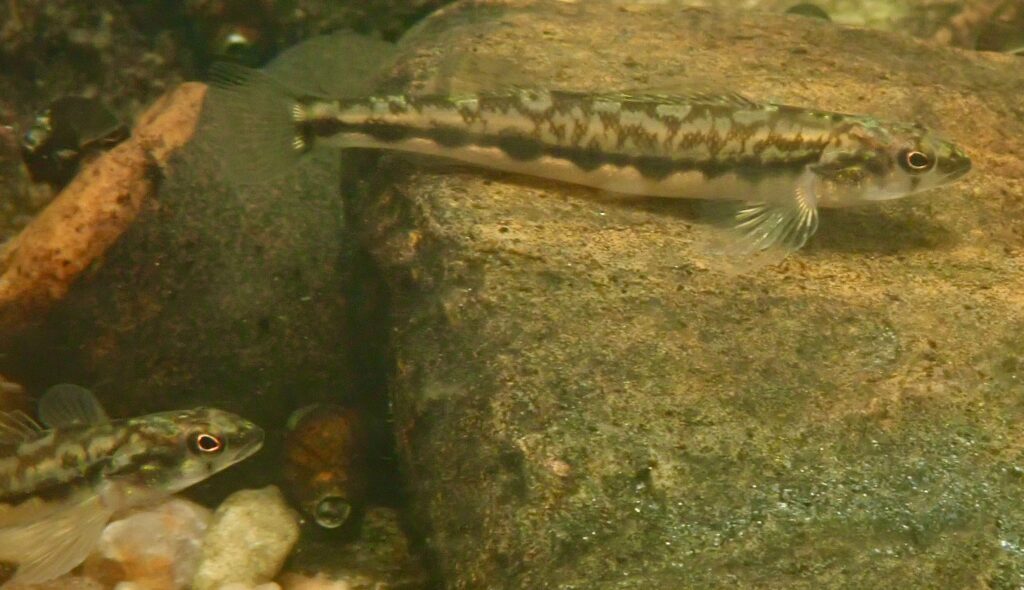
Appalachia Darter, Percina gymnocephala
References
Brewer, S.K. and D.J. Orth. 2015. Smallmouth Bass Micropterus dolomieu Lacepède, 1802. American Fisheries Society Symposium 82:9-26.
Buckwalter, J.D., E.A. Frimpong, P.L. Angermeier, and J.N. Barney. 2018. Seventy years of stream-fish collections reveal invasions and native range contractions in an Appalachian (USA) watershed. Diversity and Distributions 24:219–232.
MacGuigan, D.J., O.D. Orr, and T.J. Near. 2022. Phylogeography, hybridization, and species discovery in the Etheostoma nigrum complex (Percidae: Etheostoma: Boleosoma). Molecular Phylogenetics and Evolution. https://doi.org/10.1016/j.ympev.2022.107645. Online 15 October 2022.
North Carolina Natural Heritage Program (NCNHP). 2020. Natural Heritage Program list of rare animal species of North Carolina 2018. North Carolina Natural Heritage Program. North Carolina Department of Natural and Cultural Resources. Raleigh, NC. 167p. (Available at: https://www.ncnhp.org/publications/nhp-publications/rare-animal-list).
North Carolina Wildlife Resources Commission (NCWRC). 2021. Protected wildlife species of North Carolina. North Carolina Wildlife Resources Commission, Raleigh, NC. 10p. (Available at: https://www.ncwildlife.org/Portals/0/Conserving/documents/Protected-Wildlife-Species-of-NC.pdf).
Taylor, A.T., J.M. Long, M.D. Tringali, and B.L. Barthel. 2019. Conservation of black bass diversity: an emerging management paradigm. Fisheries 44:20-36.
Tracy, B.H., F.C. Rohde, and G.M. Hogue. 2020. An annotated atlas of the freshwater fishes of North Carolina. Southeastern Fishes Council Proceedings No. 60. 198p. (Available at: https://trace.tennessee.edu/sfcproceedings/vol1/iss60/1).
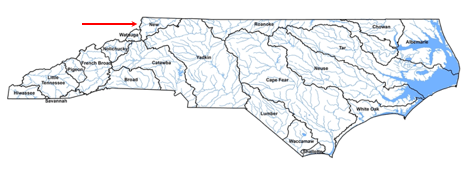

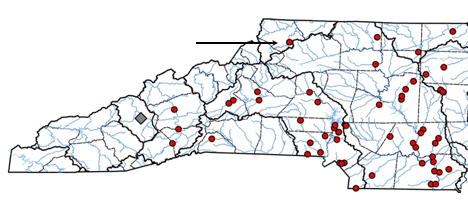
We have found appalachia darter and blue ridge sculpin in Alleghany
For trapping minnows in the South Fork to use as bait for smallmouth bass, what bait would work well? Canned tuna? Bread? Corn meal?
Good afternoon Gary — first of all, thank you very much for visiting our website. Secondly, make sure you follow all the North Carolina Wildlife Resources Commission regulations on the collection of non-game fish species and fish that you can use or not use for bait. From the New River basin, you definitely don’t want to collect and use these species as bait — Sharpnose Darter, Mimic Shiner, and Kanawha Minnow. I would also discourage using Tonguetied Minnow, “Kanawha” Rosyface Shiner, Kanawha Darter, and Appalachia Darter as bait. You may find images of these species on our website and in our blog – North Carolina’s Imperiled Fish Fauna – A Photographic Essay (https://ncfishes.com/north-carolinas-imperiled-fish-fauna-a-photographic-essay/). Minnow species that you can use for bait include Central Stoneroller, Mountain Redbelly Dace, Rosyside Dace, Whitetail Shiner, Spotfin Shiner, White Shiner, Warpaint Shiner, Bluehead Chub, Bigmouth Chub, Redlip Shiner, Tennessee Shiner, Saffron Shiner, Silver Shiner, New River Shiner, Bluntnose Minnow, Longnose Dace, Western Blacknose Dace, and Creek Chub. Whatever species you decide to use, always please return those fish to the same stream from which you collected them or humanely kill them by freezing them and then disposing of them properly. Finally, getting around to answer your question, I suggest using dry cat or dog food or pieces of stale bread. Good luck with your fishing and send us a picture of any Smallmouth Bass or other fish that you might catch – bait fish, too!